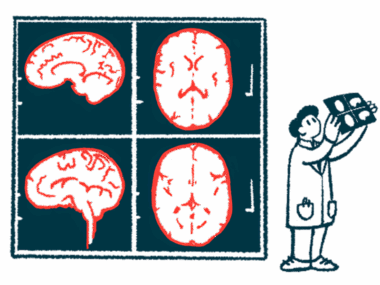Cambridge-1 ‘Supercomputer’ to Advance UK Research in Ills Like MS
Written by |

Billion Photos/Shutterstock
Nvidia announced the launch of the U.K.’s most powerful supercomputer — called Cambridge-1 — which uses a combination of artificial intelligence (AI) and simulation to help scientists to better understand complex diseases such as multiple sclerosis (MS) and to design new therapeutics.
Cambridge-1 is the first supercomputer designed and built by Nvidia to benefit the greater scientific community. As a DGX SuperPOD supercomputing cluster, it is reported to rank among the top 50 fastest computers worldwide and to be powered by 100% renewable energy. Cambridge-1 delivers more than 400 petaflops of AI performance, with one petaflop equal to one thousand trillion computing operations per second.
“Cambridge-1 will empower world-leading researchers in business and academia with the ability to perform their life’s work on the U.K.’s most powerful supercomputer, unlocking clues to disease and treatments at a scale and speed previously impossible in the U.K.,” Jensen Huang, CEO of Nvidia, which specializes in accelerated computing and AI, said in a press release.
“The discoveries developed on Cambridge-1 will take shape in the U.K., but the impact will be global, driving groundbreaking research that has the potential to benefit millions around the world,” Huang added.
MS is characterized by damage to nerve cells caused by an immune attack on their protective myelin coating, which leads to symptoms that include fatigue, muscle spasms, numbness and tingling, walking difficulties, and pain. MRI scans of the brain are regularly used to monitor disease activity and treatment effects.
Researchers at Guy’s and St Thomas’ NHS Foundation Trust and King’s College London are using Cambridge-1 to teach AI models to create synthetic brain images, by learning from many thousands of MRI scans of people of various ages and diseases.
An AI-generated synthetic brain model can provide an infinite amount of never-seen brain images with specific disease characteristics, the company reports. This will allow a better understanding of the disease, enabling earlier diagnosis and treatment, support the design of new medicines, and identify disease-causing genetic mutations. Cambridge-1 will also be used to improve understanding of other brain diseases such as stroke, dementia, and cancers affecting the brain.
“Through this partnership, we will be able to use a scale of computational power that is unprecedented in healthcare research,” said Sebastien Ourselin, PhD, head of biomedical engineering and imaging sciences at King’s College London. “It will be truly transformational for the health and treatment of patients.”
Researchers will collaborate with the National Health Service and the U.K. Biobank, one of the largest medical databases in the world. Investigators at King’s College London plan to share this synthetic brain model with the research community.
“The power of artificial intelligence in healthcare will help to speed up diagnosis for patients, improve services such as breast cancer screening, and support the way that we risk assess and prioritize patients according to clinical need,” said Ian Abbs, CEO of Guy’s and St Thomas’ NHS Foundation Trust.
Nvidia is also working with AstraZeneca’s MegaMolBART therapeutic discovery model to predict chemical reactions and to generate and optimize new molecules. AstraZeneca will also use Cambridge-1 to examine whole slide images of tissue samples by training AI on thousands of images to be able to look for features that correlate with response to medicines.
“Training AI algorithms on whole slide images is challenging in part due to the size of the images,” said Lindsay Edwards, vice president of Data Science and AI at AstraZeneca. “Working with NVIDIA on Cambridge-1 enables us to scale our current work and develop new methodologies advancing the use of AI in digital pathology.”
GlaxoSmithKline (GSK), in turn, is focusing on genetically validated therapeutic targets — proteins whose coding genes are often mutated in a particular disease — to develop medicines that are more likely to become approved therapies. Cambridge-1 will add computational power and state-of-the-art AI technology to GSK’s therapeutic discovery process.
“Advanced technologies are core to GSK’s R&D approach and help to unlock the potential of large, complex data through predictive modeling at new levels of speed, precision, and scale,” said Kim Branson, PhD, a senior vice president and global head of AI-ML (machine learning) at GSK.
“We are pleased to have the opportunity to partner with NVIDIA to deliver on GSK’s drug discovery ambition and contribute to the U.K.’s rich life sciences ecosystem — both aims that have patient benefit at the centre,” added Branson.
Finally, Oxford Nanopore will use Nvidia technology in various genomic sequencing platforms to develop AI tools that increase the speed and accuracy of genomic analysis. Access to Cambridge-1 will help them carry out these tasks in hours rather than days and offer insights into a wide range of research disciplines, from environmental monitoring to antimicrobial resistance.
Nvidia also intends to build an AI Center for Excellence in Cambridge, England, featuring a new supercomputer that will support more industries across the country, it said.






